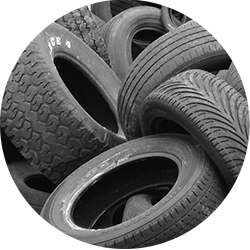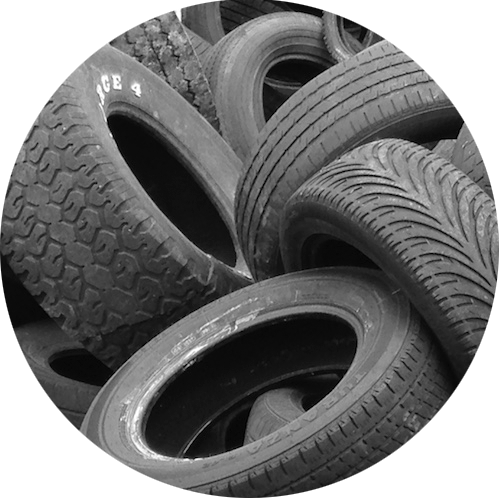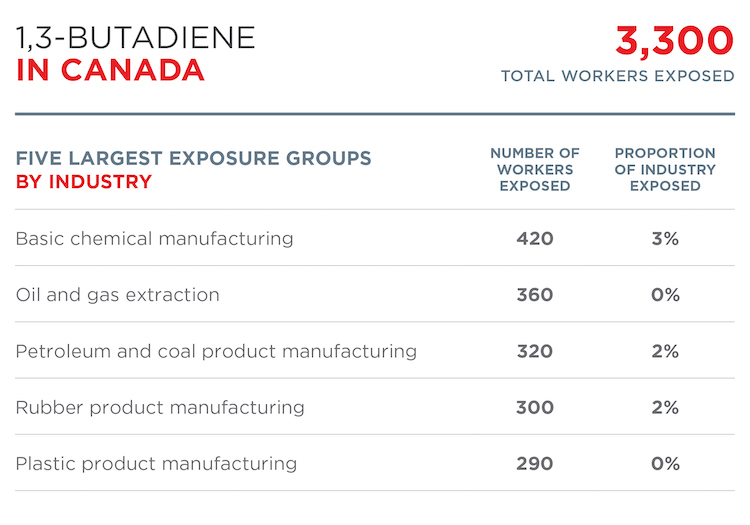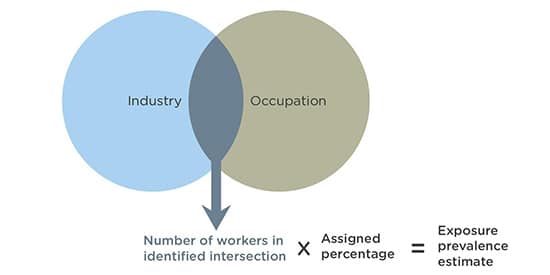
1,2-Dichloropropane
1,2-Dichloropropane Profile

INDUSTRIAL CHEMICALS – KNOWN CARCINOGEN (IARC 1)
Contents
1,2-Dichloropropane Profile
General Information
1,2-Dichloropropane (1,2-DCP), also known as propylene dichloride, is a colourless, flammable liquid that smells like chloroform. 1,2-DCP is used as a chemical intermediate to produce other organic compounds including perchloroethylene, propylene, carbon tetrachloride, and tetrachloroethylene.[1,2] Up until the 1980s in Canada, it was sold in a mixture with 1,3-dichloropropene as a soil fumigant (major trade names: D-D mixture®, Nemafene®, Vidden-D®).[3,4] It was also found in industrial solvents and paint strippers, varnishes, and furniture finish removers.[5]
The International Agency for Research on Cancer (IARC) classified 1,2-DCP as carcinogenic to humans (Group 1) in 2014.[1] Two studies examining exposure to 1,2-DCP in a Japanese printing plant in Osaka found an extremely high associated risk of a very rare bile duct cancer (17 of 111 workers were diagnosed).[6,7] IARC found that these two studies provided sufficient evidence for a causal association between 1,2-DCP and bile duct cancer.[1] Sufficient evidence for carcinogenicity was also reported in experimental animals, where malignant lung and liver tumors were observed in exposed mice.[1]
Acute exposure by intentionally or accidentally consuming or inhaling 1,2-DCP has resulted in dizziness, headache, nausea, injury to liver and kidneys, anemia, coma, and death.[3] Occupational exposures may lead to skin sensitization and dermatitis.[8]
Regulations and Guidelines
Occupational exposure limits (OEL) [9,10,11,12,13,14,15,16,17,18,19,20,21,22,23]
| Canadian Jurisdictions | OEL (ppm) | Notes |
|---|---|---|
| Canada Labour Code | 10 | Follows ACGIH’s TLV-TWA; s |
| AB | 10 | TWA |
| BC | 75 110 | TWA; dsen [stel] |
| NU, QC, SK | 75 110 | TWA [stel] |
| MB, NL, NS, PE | 10 | Follows ACGIH’s TLV-TWA; s |
| NB | 75 110 | TWA [stel] Follows ACGIH’s 1994 TLV |
| ON | 10 | TWA |
| NT, YT | 75 115 | TWA [stel] |
| Other Jurisdiction | OEL (ppm) | Notes |
| ACGIH 2020 TLV | 10 | TWA; s |
ppm = parts per million
ACGIH = American Conference of Governmental Industrial Hygienists
TLV = threshold limit value
TWA = time weighted average (8 hours)
s = sensitizer (a substance that stimulates an immune reaction; subsequent exposures result in intense responses, even at exposures below the TLV)
dsen = dermal sensitizer
stel = short term exposure limit (15 min. maximum)
Canadian environmental guidelines and standards*
| Jurisdiction | Limit | Year |
|---|---|---|
| Canadian Council of Ministers for the Environment (CCME) National Classification System for Contaminated Sites | Rank: “High priority”; no guideline developed | 2008[24] |
| Ontario Ambient Air Quality Criteria | 2400 µg/m3 (odour based) | 2016[25] |
| Ontario’s Air Pollution – Local Air Quality Regulation Standards | 1/2 hour standard: 2,400 µg/m3; Prohibited discharge into the air if the concentration of 1,2-DCP exceeds the half hour standard | 2020[26] |
| Quebec’s Clean Air Regulation | 1 year limit: 4 µg/m3; Prohibited discharge into the air if the concentration of 1,2-DCP exceeds the 1 year standard | 2011[27] |
| Environment Canada’s National Pollutant Release Inventory | Listed under Part 1A: Threshold Category. Reportable to NPRI if manufactured, processed, or otherwise used at quantities greater than 10 tonnes | 2016[28] |
| BC’s Contaminated Sites Regulation, BC Reg 375/96 | Sets soil standards for the protection of human health: Agricultural and low density residential sites: 600 μg/g Urban park and high density residential sites: 1,000 μg/g Commercial sites: 3,500 μg/g Industrial sites: 10,000 μg/g
Drinking water: 4.5 μg/L Sets vapour standards for the protection of human health: | 2019[29] |
| WHO Drinking Water Guideline | 0.04 mg/L (provisional guideline value) | 2011[30] |
*Standards are legislated and legally enforceable, while guidelines (including Ontario ambient air quality criteria) describe concentrations of contaminants in the environment (e.g. air, water) that are protective against adverse health, environmental, or aesthetic (e.g. odour) effects
Main Uses
1,2-DCP is a synthetic chemical and a byproduct in producing epichlorohydrin. Currently, the major use of 1,2-DCP is as an intermediate for producing organic compounds.[3,31] Other functions include: a solvent in paint, varnish, and furniture finish removers; a lead scavenger in gasoline additives such as anti-knock fluids; a dry cleaning fluid; a paint remover; and a metal degreaser. 1,2-DCP is also used to make and convert rubber, prepare scouring compounds, and produce photographic film.[31] In many of these cases, 1,2-DCP has now been replaced by other compounds.[3]
In the past, 1,2-DCP was formulated with 1,3-dichloropropene in a formulation called D-D mixture that was used to fumigate soil and grain. Formulations containing 1,2-DCP were effective against soil nematodes, and were applied to a number of different crops including wheat, canola, sugar beets, and others.[31] 1,2-DCP has not been used as a soil fumigant in Canada since the 1980s,[4] and it is currently not registered for use as a pesticide under the Pest Control Act.[32]
Canadian Production and Trade
The total global production volume of 1,2-DCP was estimated at 350,000 tonnes for 2001.[31] Major producers of 1,2-DCP at that time were located in India, Germany, and the United States.[31] In 2015, between 100 million and 1 million pounds of 1,2-dichloropropane were produced in the United States[33]. In 2018, approximately 19.4 million pounds of 1,2-dichloropropane were waste managed in the United States.[33]
Production and trade information for 1,2-DCP specific to Canada is scarce. Results from the second Domestic Substances List Inventory Update indicate that between 100 to 999 kg of 1,2-DCP was imported during 2011 as an intermediate compound for paper products, mixtures, or manufactured items.[34]
Environmental Exposures Overview
1,2-DCP is a synthetic chemical and its presence in the environment is the direct result of anthropogenic activity. For example, 1,2-DCP is released into wastewater by industries that use it as a solvent. This occurs in the manufacture of ion exchange resins.[3]
In groundwater, 1,2-DCP may persist for a long time.[3] It is very resistant to degradation in soil; one study showed that after 12 weeks in a closed system, 98% of the initial amount of 1,2-DCP applied could be recovered.[35]
Exposure to 1,2-DCP in the general population may occur by inhaling contaminated air or consuming contaminated drinking water.[3] According to the National Pollutant Release Inventory, there were no on-site releases of 1,2-DCP to the air by industry in Canada in 2010 and 2014.[36] However, exposure to 1,2-DCP may arise when shallow groundwater gets contaminated by soils to which 1,2-DCP had been historically applied and then desorbed. Contamination can also take place when currently-used fumigants, such as 1,3-dichloropropene, contain trace amounts of 1,2-DCP.[37] For example, 1,2-DCP was detected in 56% of wells sampled in Southwestern BC in 1997-1998.[37] However, since 1,2-DCP is no longer used as a soil fumigant and in commercial products in Canada and the United States, environmental exposure is expected to be low.
Occupational Exposures Overview
The main routes of occupational exposure are through inhalation and dermal pathways.[38] People who produce 1,2-DCP, use it in chemical reactions, or use it as an industrial solvent have the greatest potential for exposure.[39,40]
Canadian occupational exposure data is limited. In the 1981-1983 National Occupational Exposure Survey, the National Institute for Occupational Safety and Health estimated that 2,944 workers, not including farmers, were potentially exposed to 1,2-DCP in the United States.[8] Dow Chemical Company, a major manufacturer of 1,2-DCP, estimated that 45 to 123 workers were routinely and potentially exposed to the chemical in the 1980s.[3] However, because the conversion and disposal of 1,2-DCP occurs in closed systems, Dow Chemical Company asserts that the current level of exposure is minimal.[3]
Exposure to 1,2-DCP in its solvent form increases with poor ventilation and lack of respiratory protective equipment. This is illustrated in the studies IARC reviewed on the Japanese printing plant where exposures were 19 to 33 times the occupational exposure limit set by the Canadian Labour Code.[6,7] Other printing plants in Japan with poor ventilation were estimated to result in similar, or even higher levels of exposure.[41] Such high exposure levels are unlikely to occur in Canadian workplaces since 1,2-DCP is not used as a solvent.[34]
CAREX Canada has not prioritized 1,2-DCP for exposure estimate development. This is because there is a lack of exposure monitoring data in the Canadian Workplace Exposure Database on which to base an estimate.
Sources
Subscribe to our newsletters
The CAREX Canada team offers two regular newsletters: the biannual e-Bulletin summarizing information on upcoming webinars, new publications, and updates to estimates and tools; and the monthly Carcinogens in the News, a digest of media articles, government reports, and academic literature related to the carcinogens we’ve classified as important for surveillance in Canada. Sign up for one or both of these newsletters below.
CAREX Canada
School of Population and Public Health
University of British Columbia
Vancouver Campus
370A - 2206 East Mall
Vancouver, BC V6T 1Z3
CANADA
As a national organization, our work extends across borders into many Indigenous lands throughout Canada. We gratefully acknowledge that our host institution, the University of British Columbia Point Grey campus, is located on the traditional, ancestral, and unceded territories of the xʷməθkʷəy̓əm (Musqueam) people.









